 |
February 25, 2006
 |
The oversight body of the US National Science Foundation, the National Science Board, has released its two volume (1,000 page) biennial report on global Science and Engineering Indicators together with a twelve page companion, America's Pressing Challenge - Building a Stronger Foundation.
In the words of Science's Jeffrey Mervis it covers "everything from academic research spending to zoo attendance." And it will certainly form part of the basic information for US science and engineering policy annalists.
So for example the SEI analyses the factors behind the current boom in Asia in high tech manufacturing.
Steven Beering, a member of the National Science Board, told Science "its a changed world, [and one reason for the change is the free flow of knowledge across borders]. We have been splendid teachers, and the foreign students we've trained have gone back home and are excelling."
The report takes care to list important caveats for readers to allow them to examine the findings more critically than might otherwise be done. Comparison of research expenditure can be subject to significant error. "It is difficult or impossible to assess the quality of [purchasing power parities, PPP] for some countries, most notably China. Although PPP estimates for [industrialized] countries are quite reliable, PPP estimates for developing countries are often rough approximations." In particular, China's expenditures, reported at US$84 billion in 2003, could be inflated by a factor of four or five.
Furthermore, businesses with fewer than five employees go unreported while data from other sectors, such as research done by non-profit organisations and state and local governments, are extrapolated from surveys nearly a decade old.
The NSB's Companion, America's Pressing Challenge - Building a Stronger Foundation, sets the following priorities for "ensuring a world-class eduction in STEM [science, technology, engineering and mathematics] fields for all Americans:
strong public support for the value of STEM education for all students and citizens,
a high quality teaching workforce,
appropriate opportunities to learn for all students,
effective guidance counselling on STEM education and careers, and
assessment tools that reinforce learning in STEM fields.
The Companion pointed out that for advanced students in mathematics, 11 out of 15
participating countries scored higher than the U.S. and no country scored
significantly lower.
It also noted that in the advanced physics assessment, U.S. students tied with Australia for the lowest score.
The table and charts below give an indication of where Australia ranks in overall research and development and once again indicates that there is an urgent need to alter the environment so that the private sector will significantly increase its contribution to research and development while there should be a down shift from short term business oriented R&D in universities and governmental research establishments with a concomitant increases in fundamental and strategic research.
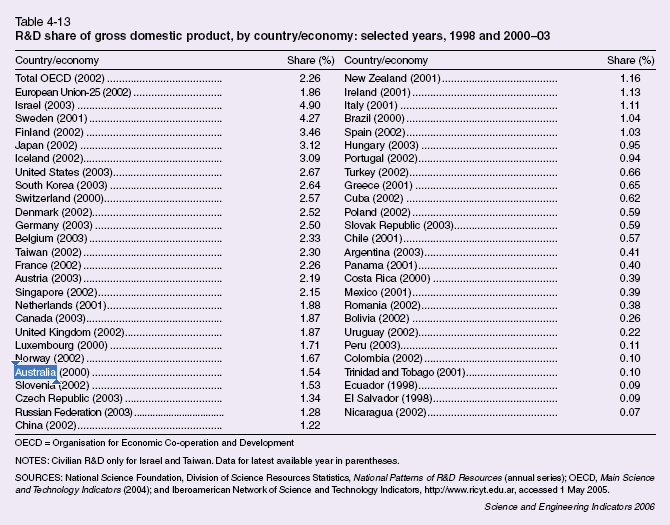
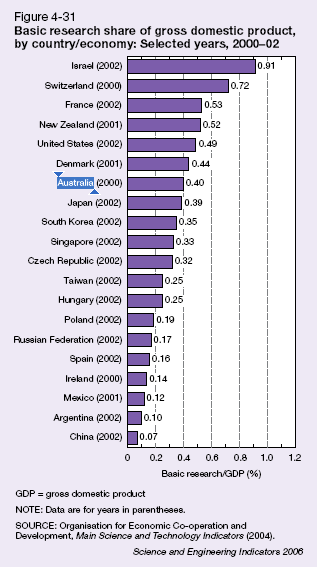
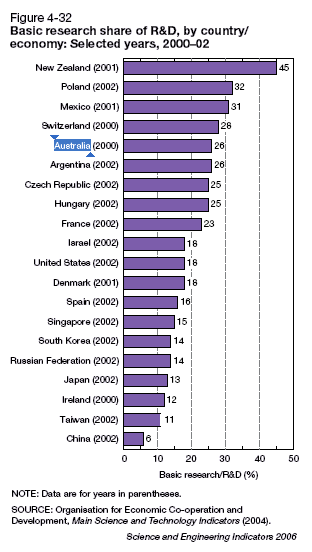
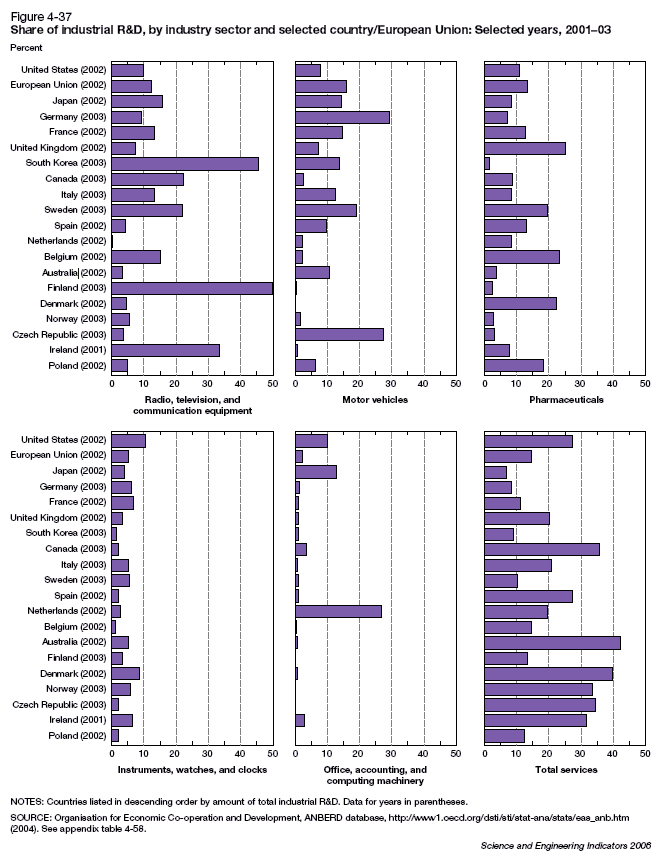
|
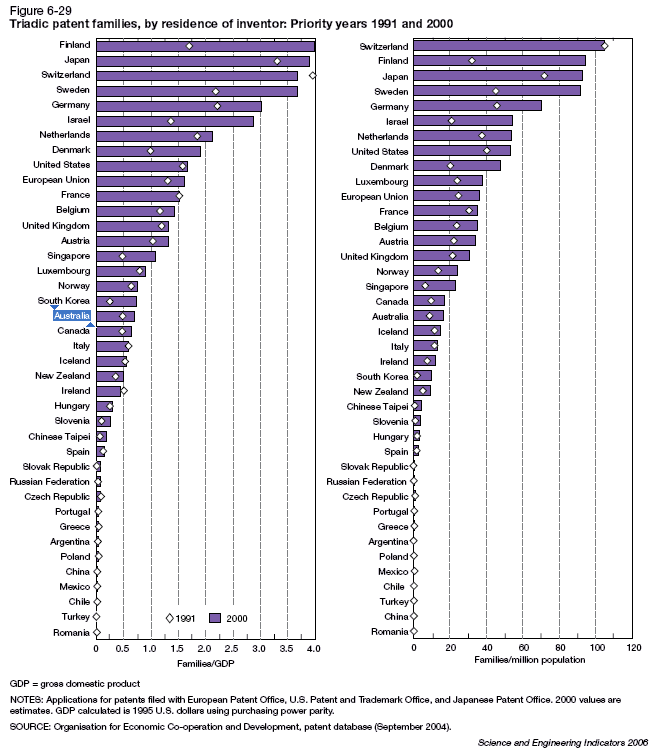
Alex Reisner
The Funneled Web